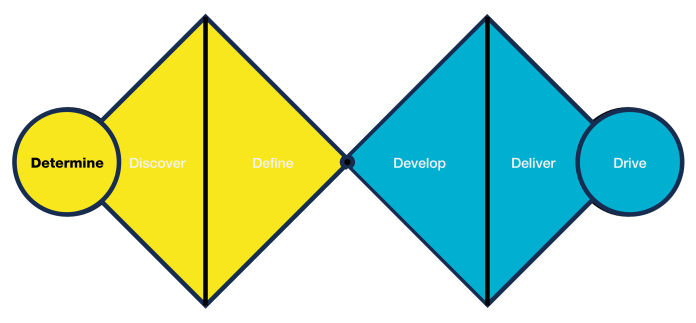English | Chinese (繁體中文)
The Role of This Tool in the First Phase of the Design Thinking Method

In the “Determining Major Changes and Challenges” phase, the goal is to understand the broader context and pinpoint the key changes and challenges relevant to the problem. The “Hopes and Fears” tool aids this process by exploring the aspirations and concerns of the users.
“Hopes and Fears” helps to surface the user’s desires and potential obstacles, providing valuable insights into what they want to achieve and what they perceive as hindrances. This understanding can shape the identification of major changes and challenges, and also influence the direction of the solutions proposed.
The tool embodies the human-centered approach of Design Thinking as it focuses on understanding the desires and concerns of the users. By shedding light on their aspirations and potential obstacles, it ensures that the user’s perspective stays at the core of the process.
It encourages empathy, a key aspect of the human-centered approach, by urging designers to understand and consider the emotional state and perspective of the users. This results in solutions that are not only innovative but also meaningful and valuable to the users they are designed for.
The Procedure for Using This Design Thinking Tool
Step 1: Interview or Survey Users: Start by gathering user information. This could be via interviews, surveys, or workshops. Ask them about their aspirations (hopes) and concerns (fears) related to the problem space.
Step 2: Document Hopes and Fears: Record the information collected. It could be useful to use separate lists or areas on a board for hopes and fears.
Step 3: Analyze and Identify Patterns: Look for patterns, common themes, or significant outliers in the hopes and fears expressed by users. These can highlight major desires and concerns to address.
Step 4: Prioritize: Prioritize the hopes and fears based on factors like their frequency, impact, or relevance to the problem. This helps in focusing on the most significant items.
The Worksheet of This Tool

Note: In order to enhance the efficiency and effectiveness of business innovation and digital transformation projects, we have joined forces with data and digital experts to launch Data-Driven Design Thinking Tools and Technologies. Details have been announced in the seminar of 「數據驅動的設計思維,更快更準實現創新成果」. If you need to revisit the seminar, please click on the following link: https://www.innoedge.com.hk/data-driven-design-thinking-2023







![[Class Recap] Empowering Your Creativity and Innovation Power](https://i0.wp.com/www.innoedge.com.hk/wp-content/uploads/2024/04/20240329_180728-scaled.jpg?resize=218%2C150&ssl=1)
![[Class Recap] Developing Sustainable Business Models through Systems Thinking](https://i0.wp.com/www.innoedge.com.hk/wp-content/uploads/2024/04/20240328_181754-scaled.jpg?resize=218%2C150&ssl=1)
![[Class Recap] Creating Wonderful User Experience through Customer Journey Design](https://i0.wp.com/www.innoedge.com.hk/wp-content/uploads/2024/04/20240328_131024-scaled.jpg?resize=218%2C150&ssl=1)










